Bayesian parameter estimation and model comparison¶
For the example scripts below to run, you will need to import the following modules:
import numpy as np
from numpy import sum
import matplotlib.pyplot as plt
from scipy.stats import distributions
Is this coin fair?¶
Uniform prior¶
Imagine we had n=20, r=7. We can plot the posterior PDF using
n = 20
r = 7
Nsamp = 201 # no of points to sample at
p = np.linspace(0,1,Nsamp)
pdense = distributions.binom.pmf(r,n,p) # probability mass function
plt.plot(p,pdense)
plt.savefig('fig01.png')

Implementing this in Python and plotting
pdense = distributions.binom.pmf(r,n,p) # probability mass function
p_mean = sum(p*pdense)/sum(pdense)
plt.axvline(p_mean,color='r')
plt.savefig('fig02.png')
plt.close()

It is instructive to repeat this example for n=20 for a range of values of r.
n = 20
Nsamp = 201
p = np.linspace(0,1,Nsamp)
deltap = 1./(Nsamp-1) # step size between samples of p
for r in range(0,20,2):
# compute posterior
pdense = distributions.binom.pmf(r,n,p)
pdense = pdense / (deltap*sum(pdense)) # normalize posterior
# compute mean
p_mean = sum(p*pdense)/sum(pdense)
# make the figure
plt.figure()
plt.plot(p,pdense)
plt.axvline(p_mean,color='r')
plt.xlabel('p')
plt.ylabel('P(p|D,M)')
plt.title('r={}'.format(r))
plt.savefig('fig03_r{}'.format(r))
plt.close()
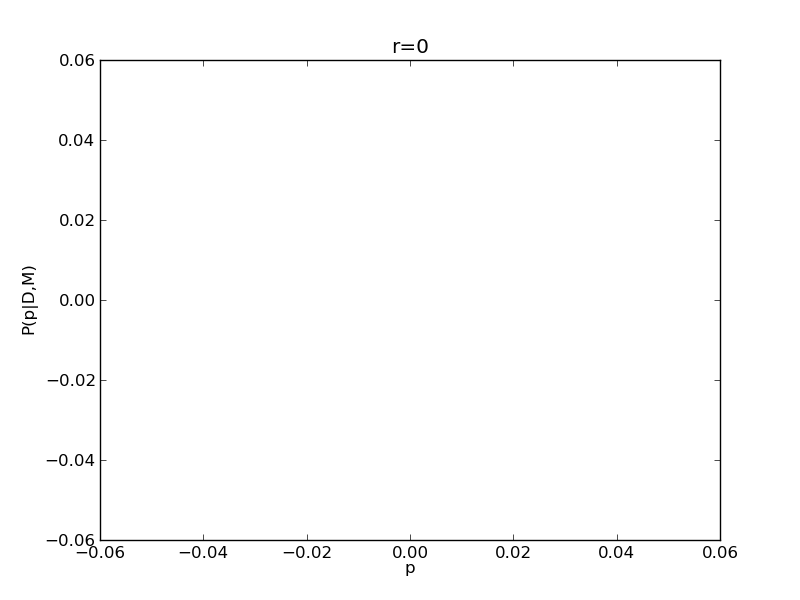
|
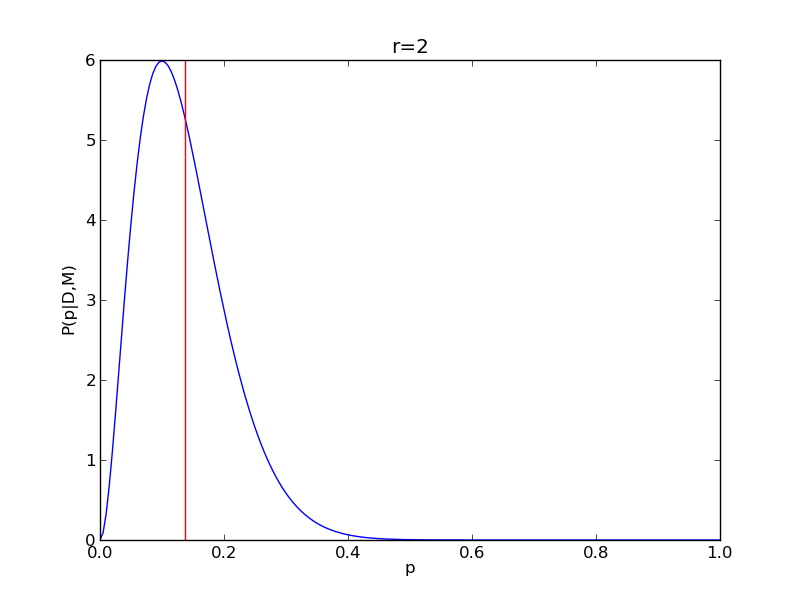
|
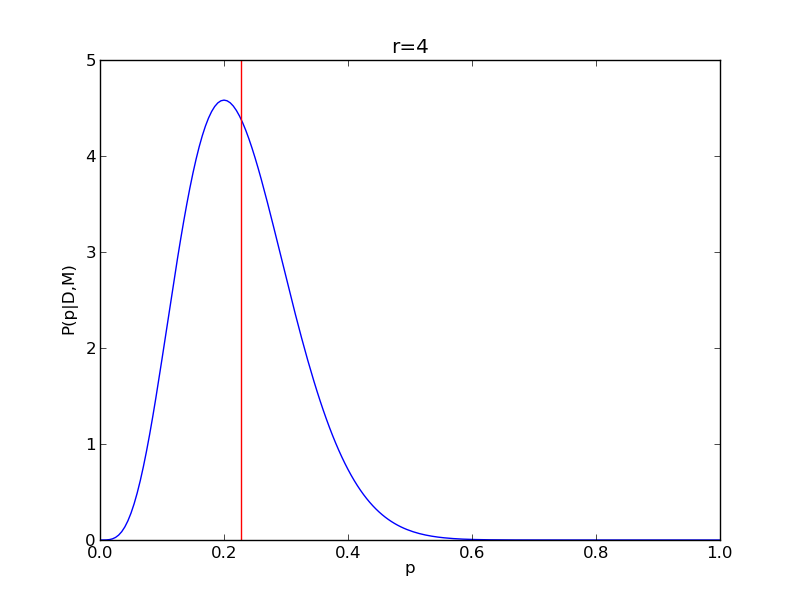
|
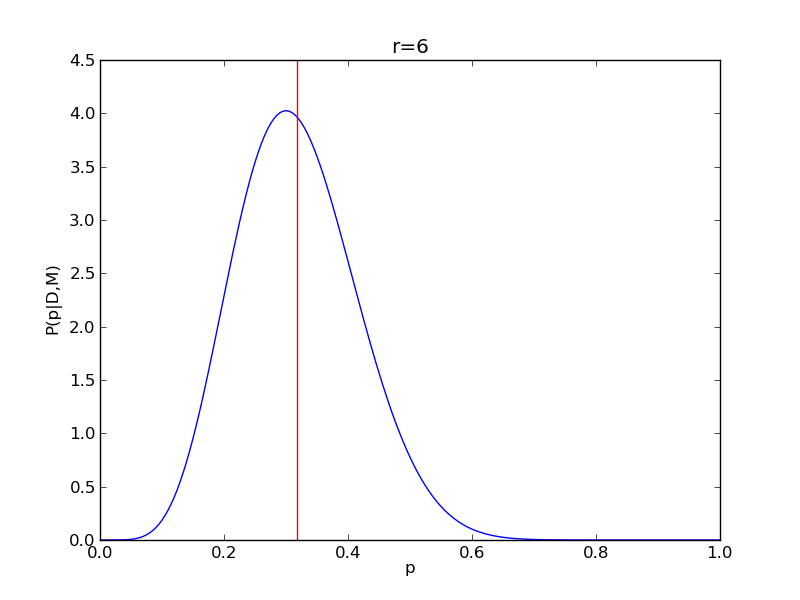
|
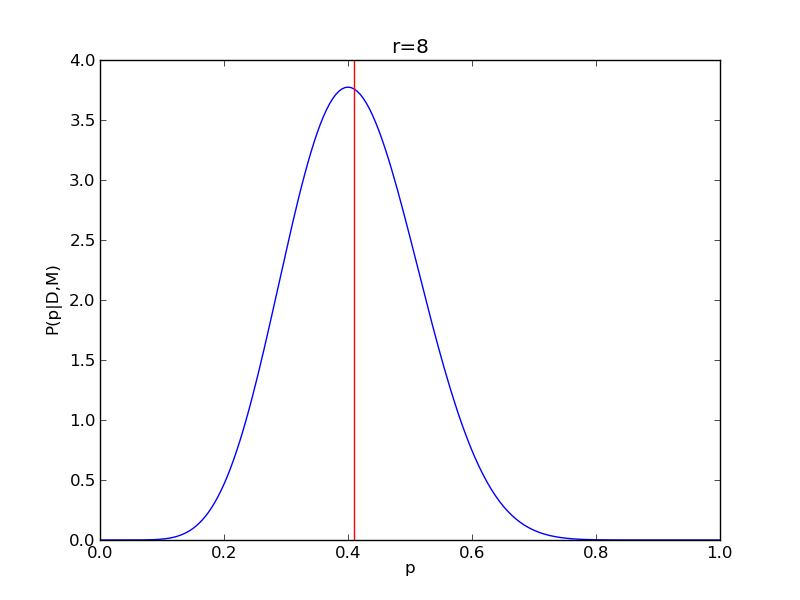
|
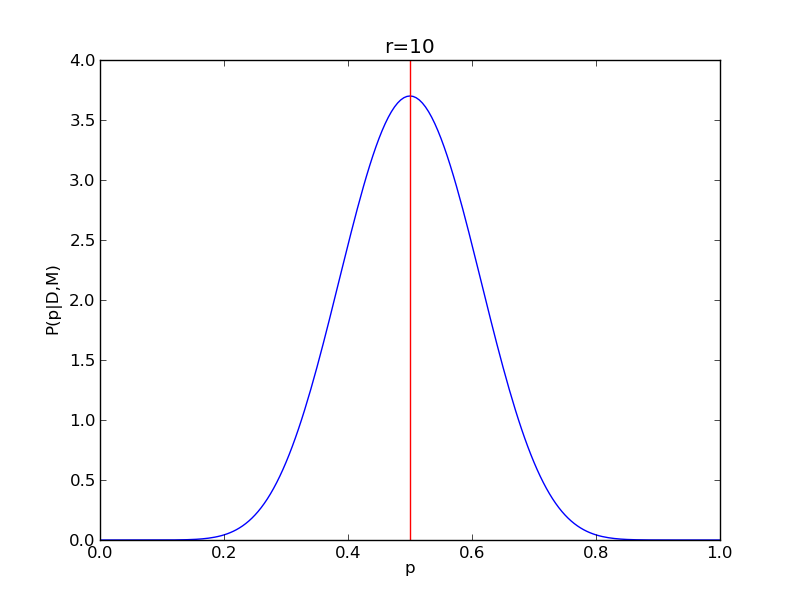
|
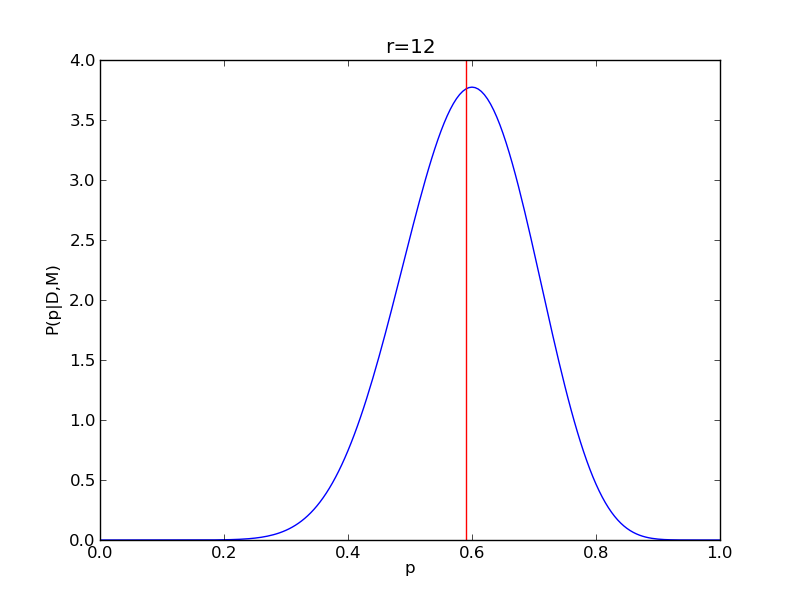
|
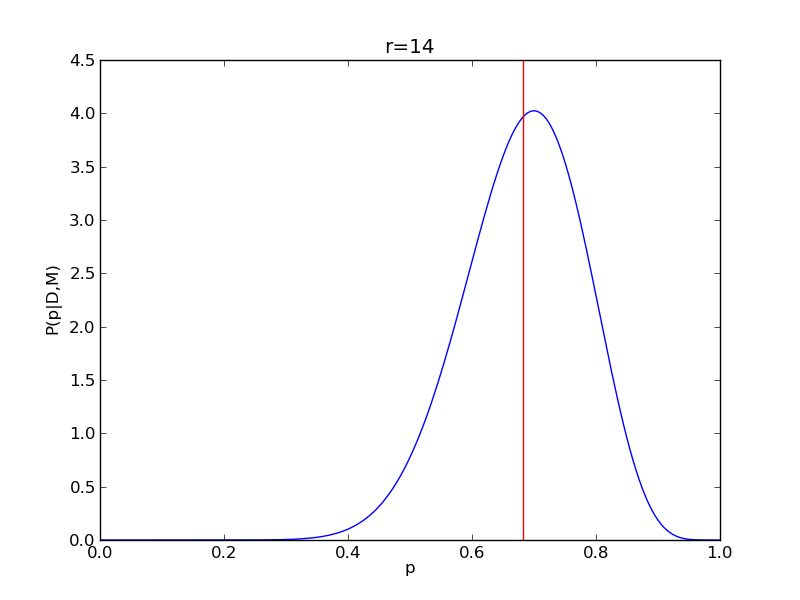
|
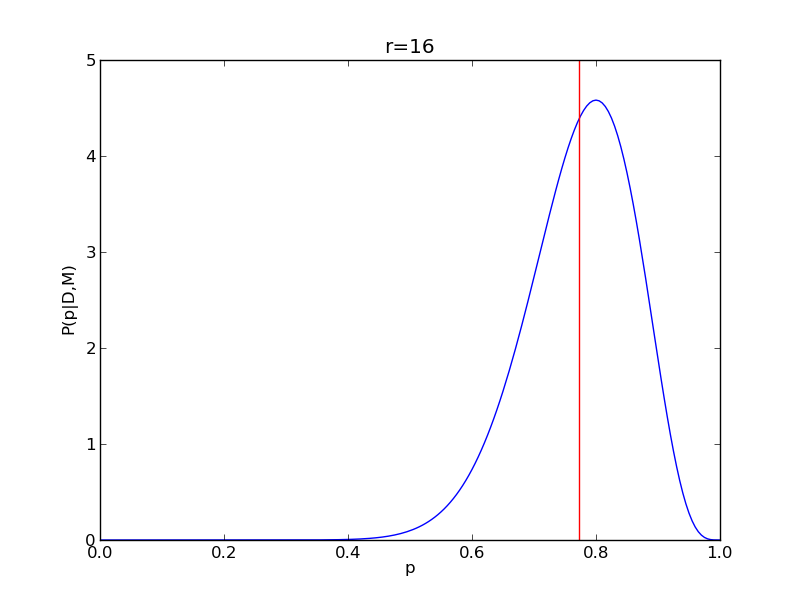
|
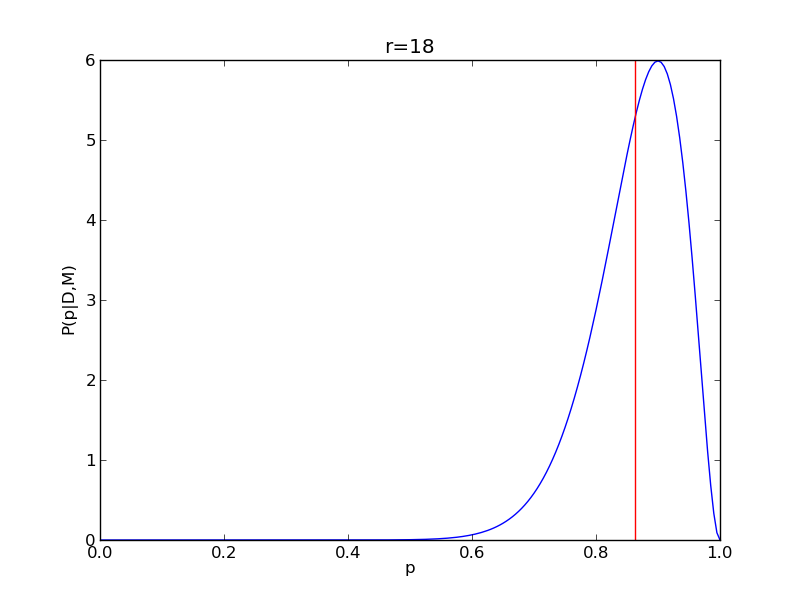
|
Beta prior¶
Let’s now redo the coin analysis with a beta prior with \alpha=\beta=10
alpha = 10
beta = 10
Nsamp = 201 # no of points to sample at
p = np.linspace(0,1,Nsamp)
pdense = distributions.beta.pdf(p,alpha,beta) # probability mass function
plt.plot(p,pdense)
plt.savefig('fig04.png')

alpha = 10
beta = 10
n = 20
Nsamp = 201 # no of points to sample at
deltap = 1./(Nsamp-1) # step size between samples of p
for r in range(0,20,2):
# compute posterior
pdense = distributions.beta.pdf(p,alpha+r,beta+n-r)
pdense2 = distributions.binom.pmf(r,n,p) * distributions.beta.pdf(p,alpha,beta)
pdense2 = pdense2 / (deltap*sum(pdense2)) # normalize posterior
# make the figure
plt.figure()
plt.plot(p,pdense)
plt.plot(p,pdense2,'--',lw=2)
plt.xlabel('p')
plt.ylabel('PDF')
plt.title('r={}'.format(r))
plt.savefig('fig05_r{}'.format(r))
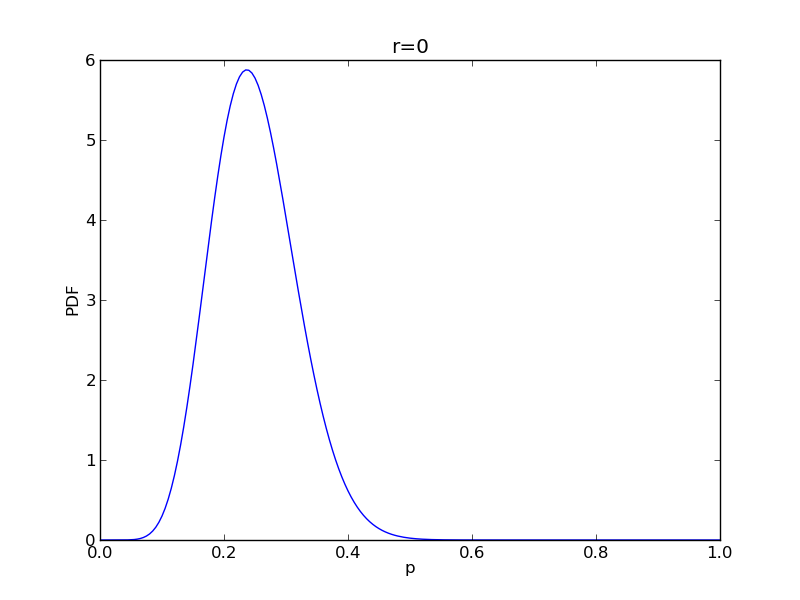
|
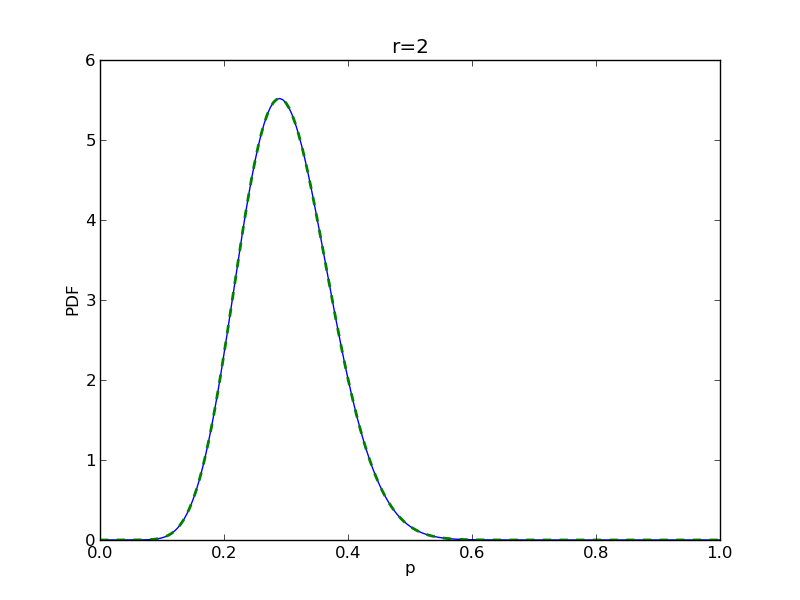
|
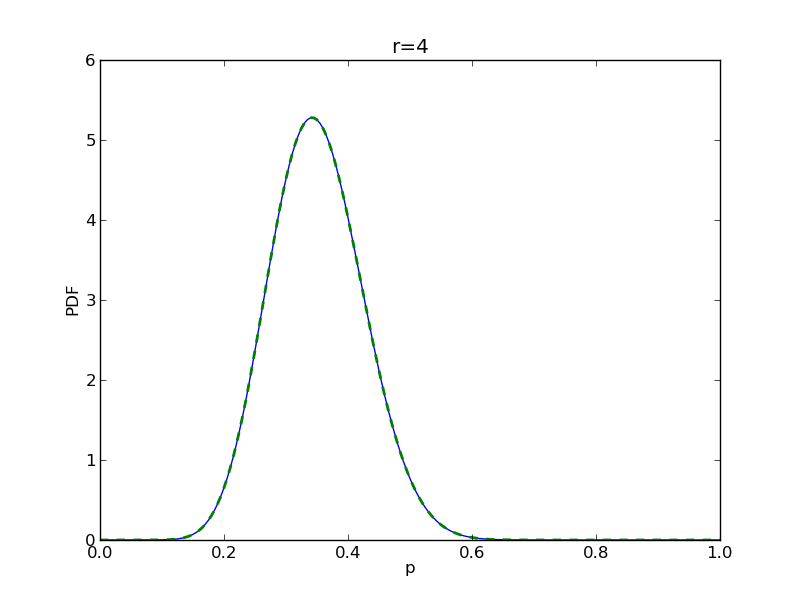
|
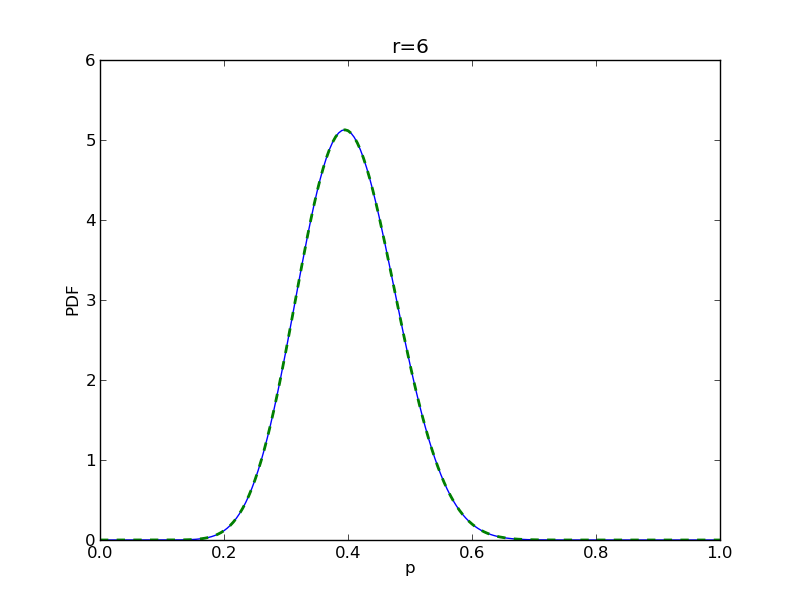
|
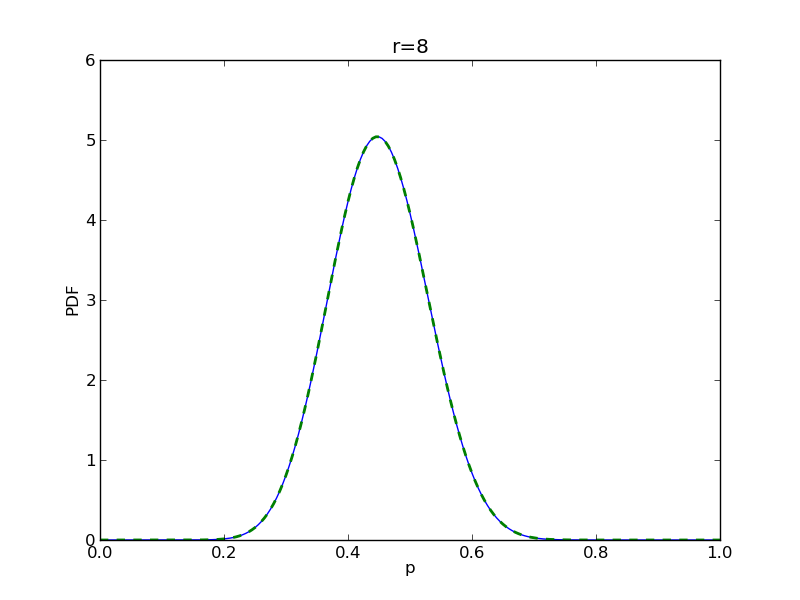
|
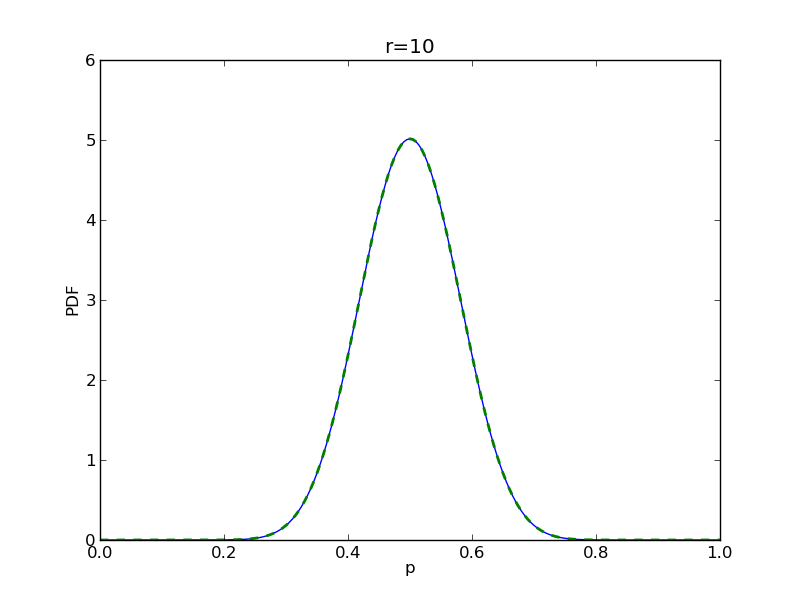
|
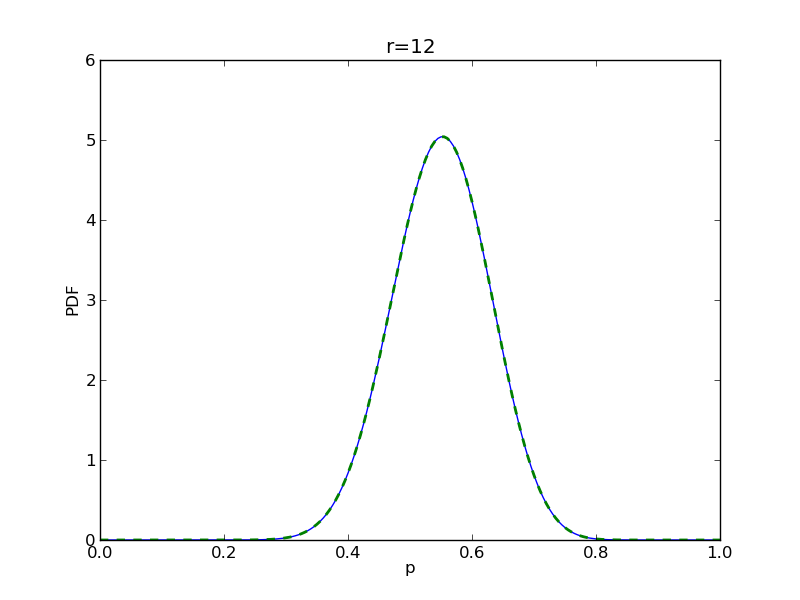
|
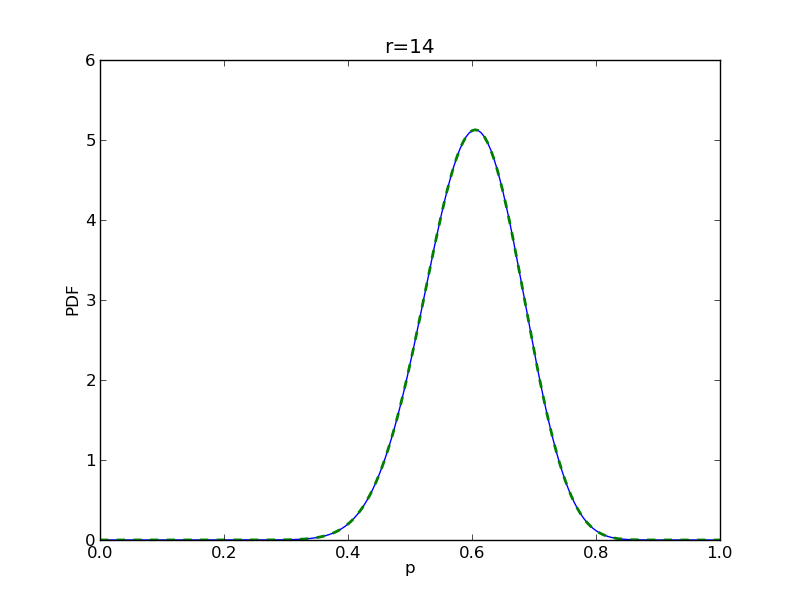
|
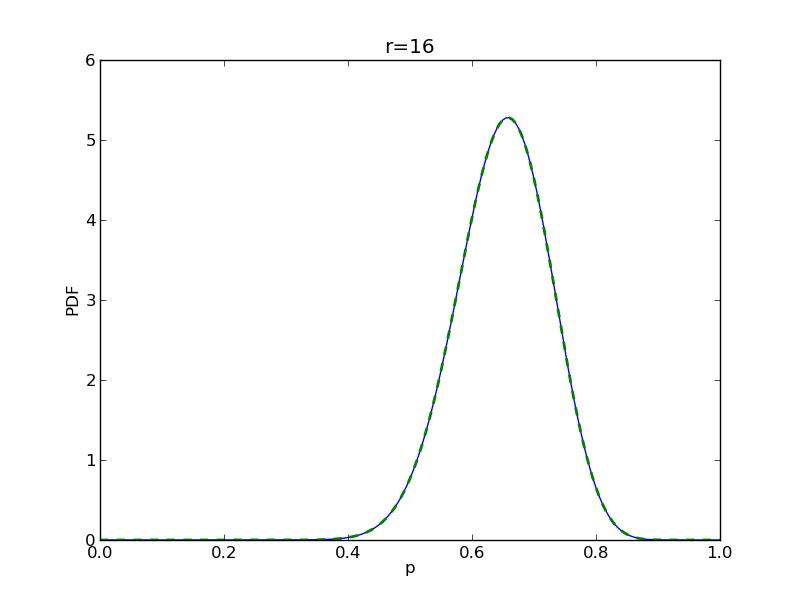
|
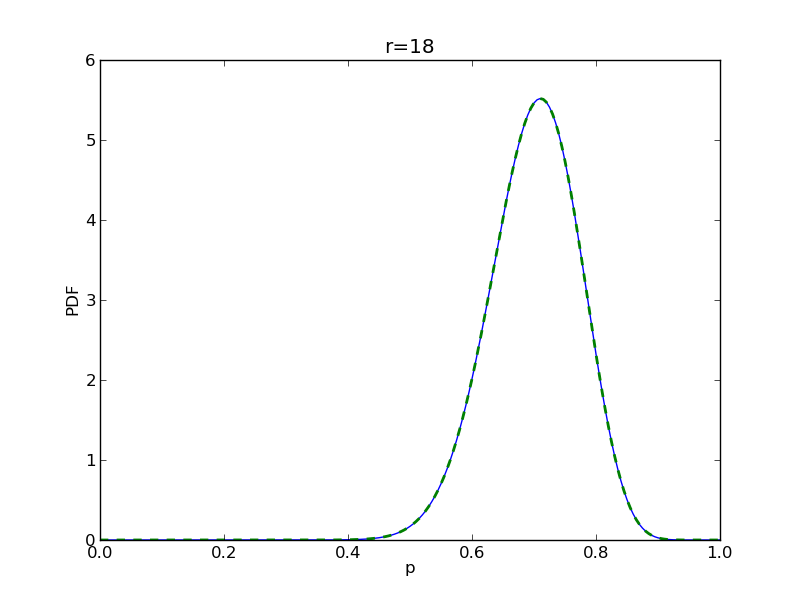
|
It is instructive to plot the likelihood, prior and posterior together:
alpha = 10
beta = 10
n = 20
Nsamp = 201 # no of points to sample at
deltap = 1./(Nsamp-1) # step size between samples of p
prior = distributions.beta.pdf(p,alpha,beta)
for r in range(0,20,2):
like = distributions.binom.pmf(r,n,p)
like = like/(deltap*sum(like)) # for plotting convenience only: see below
post = distributions.beta.pdf(p,alpha+r,beta+n-r)
# make the figure
plt.figure()
plt.plot(p,post,'k',label='posterior')
plt.plot(p,like,'r',label='likelihood')
plt.plot(p,prior,'b',label='prior')
plt.xlabel('p')
plt.ylabel('PDF')
plt.legend(loc='best')
plt.title('r={}'.format(r))
plt.savefig('fig06_r{}'.format(r))
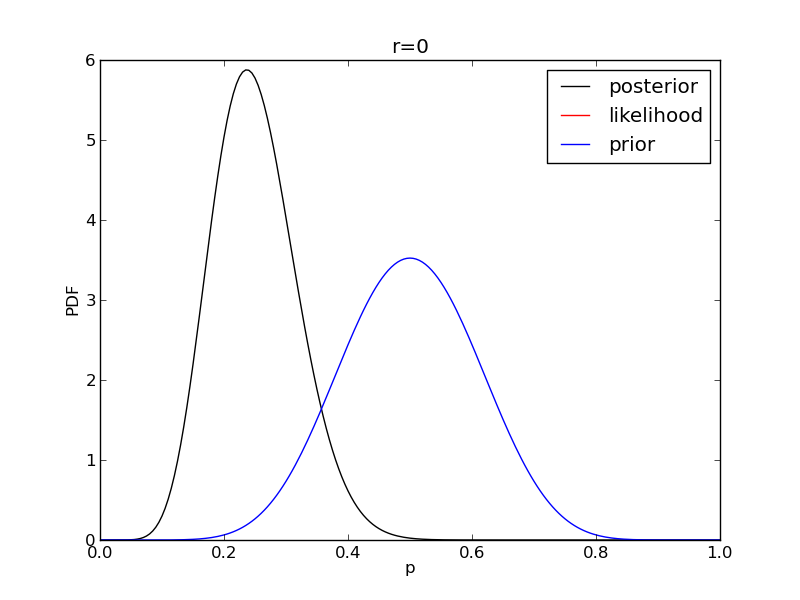
|
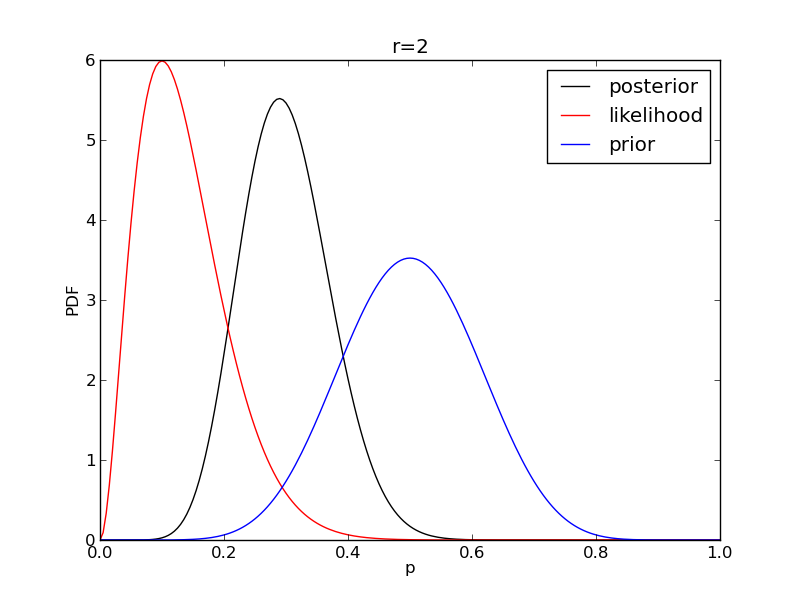
|
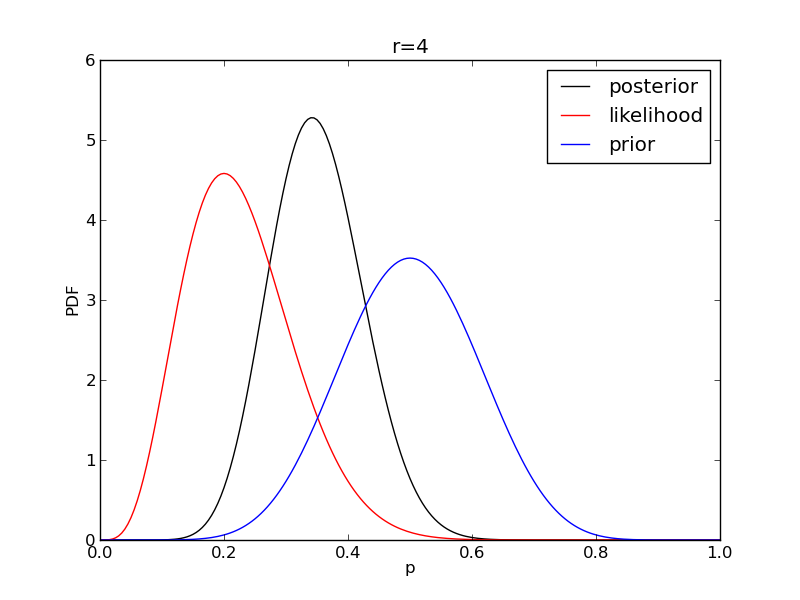
|
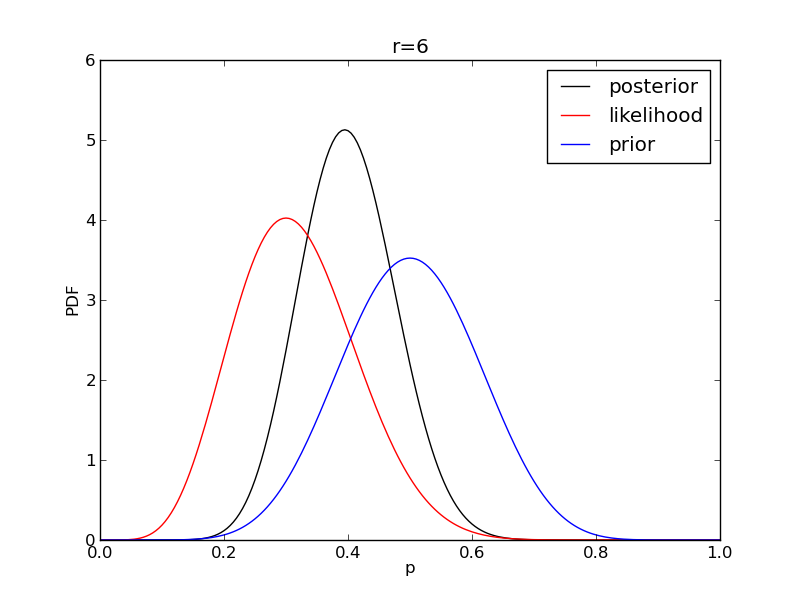
|
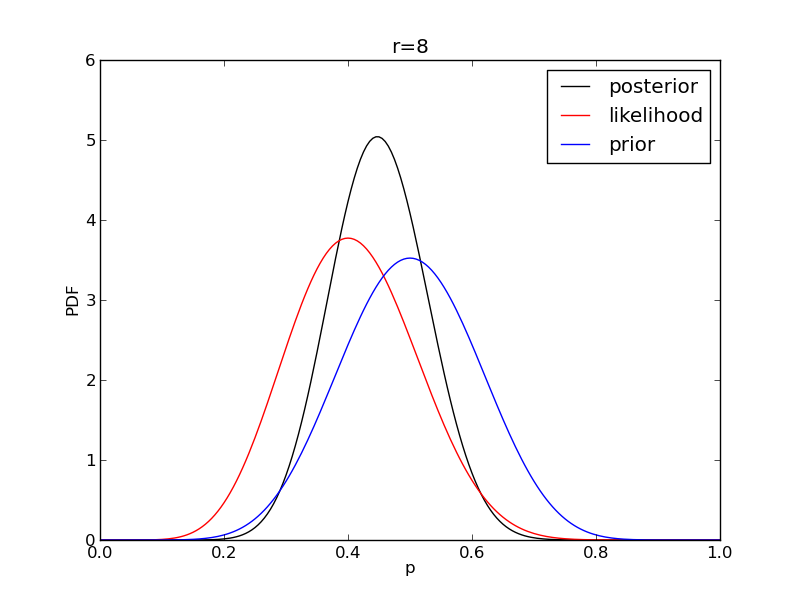
|
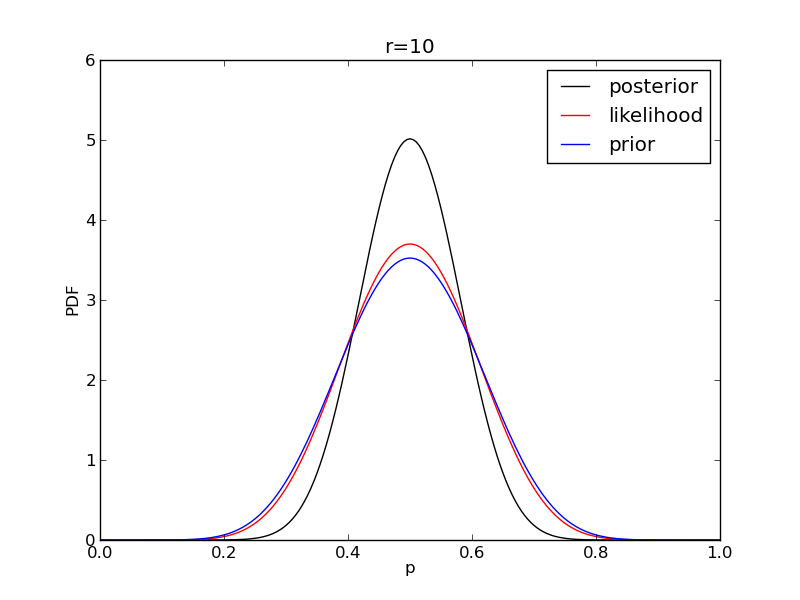
|
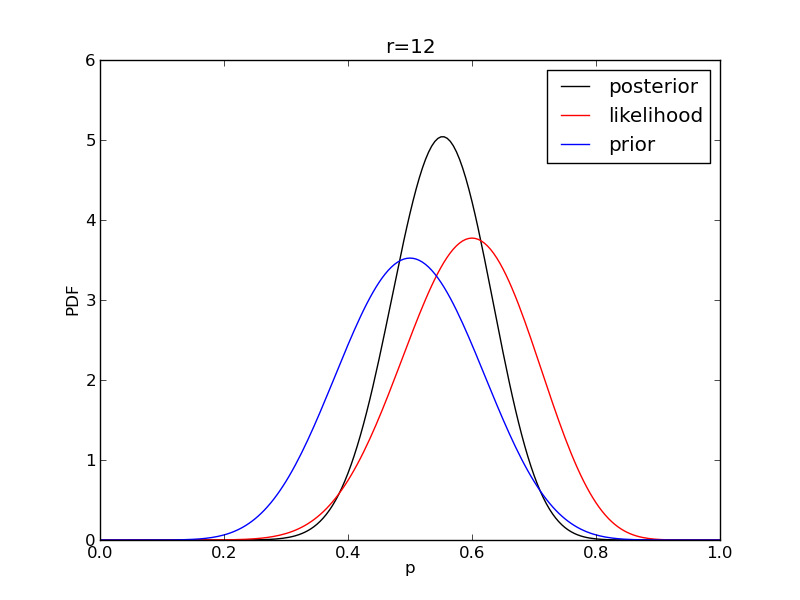
|
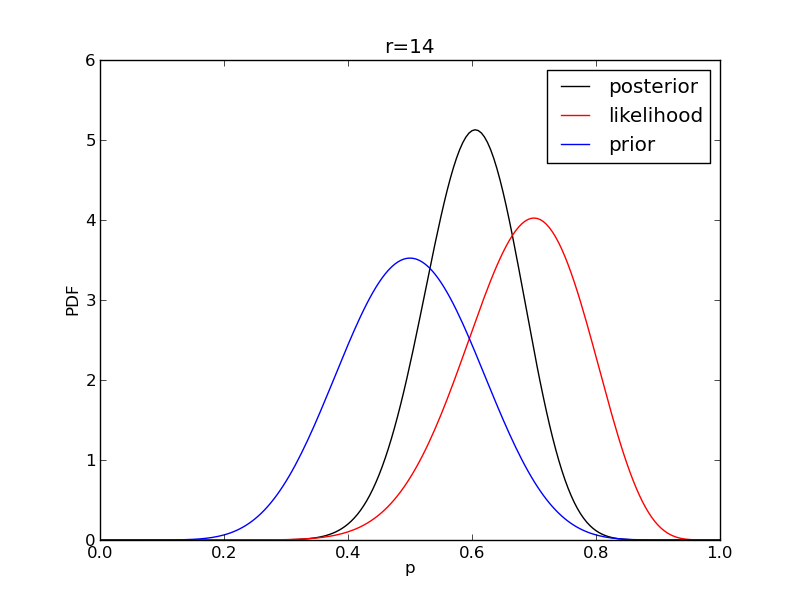
|
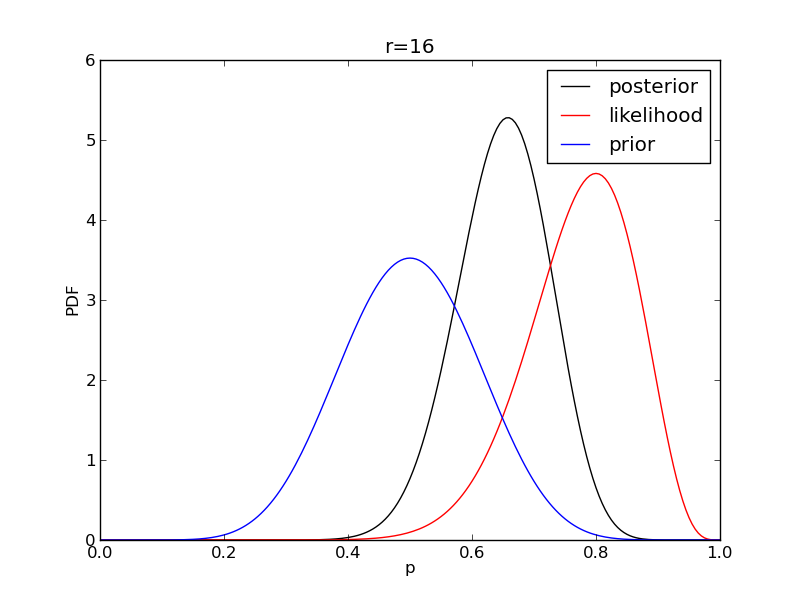
|
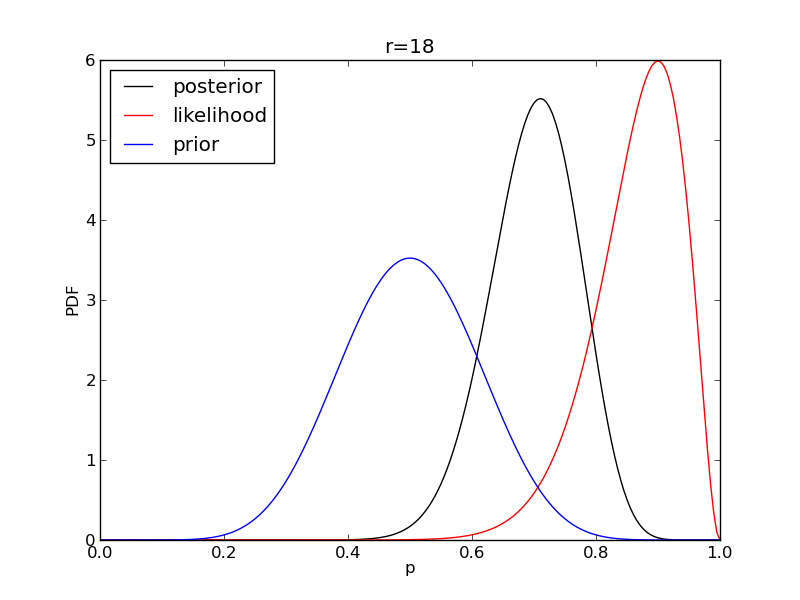
|
It is interesting to see how the likelihood and posterior evolve as we get more data.
alpha = 10
beta = 10
n = 20
Nsamp = 201 # no of points to sample at
deltap = 1./(Nsamp-1) # step size between samples of p
prior = distributions.beta.pdf(p,alpha,beta)
for i in range(1,9):
r = 2**i
n = (3.0/2.0)*r
like = distributions.binom.pmf(r,n,p)
like = like/(deltap*sum(like)) # for plotting convenience only
post = distributions.beta.pdf(p,alpha+r,beta+n-r)
# make the figure
plt.figure()
plt.plot(p,post,'k',label='posterior')
plt.plot(p,like,'r',label='likelihood')
plt.plot(p,prior,'b',label='prior')
plt.xlabel('p')
plt.ylabel('PDF')
plt.legend(loc='best')
plt.title('r/n={}/{:.0f}'.format(r,n))
plt.savefig('fig07_r{}'.format(r))
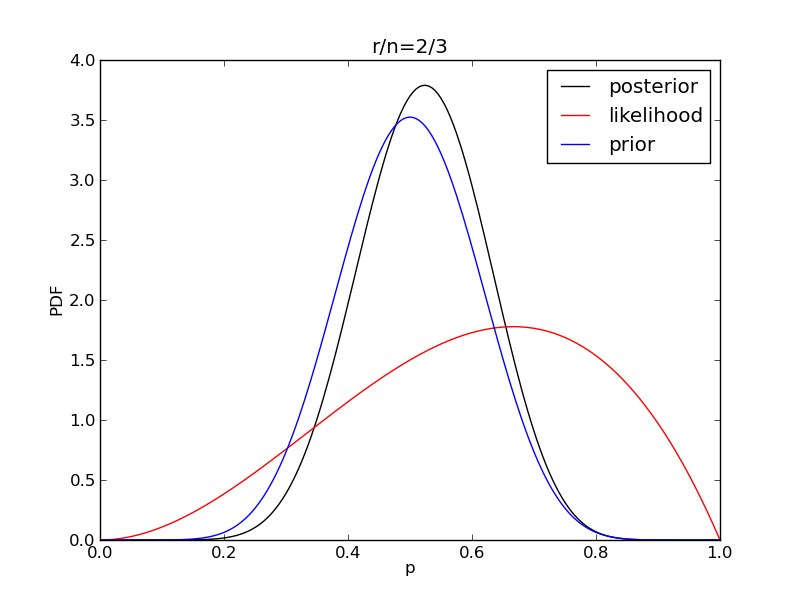
|
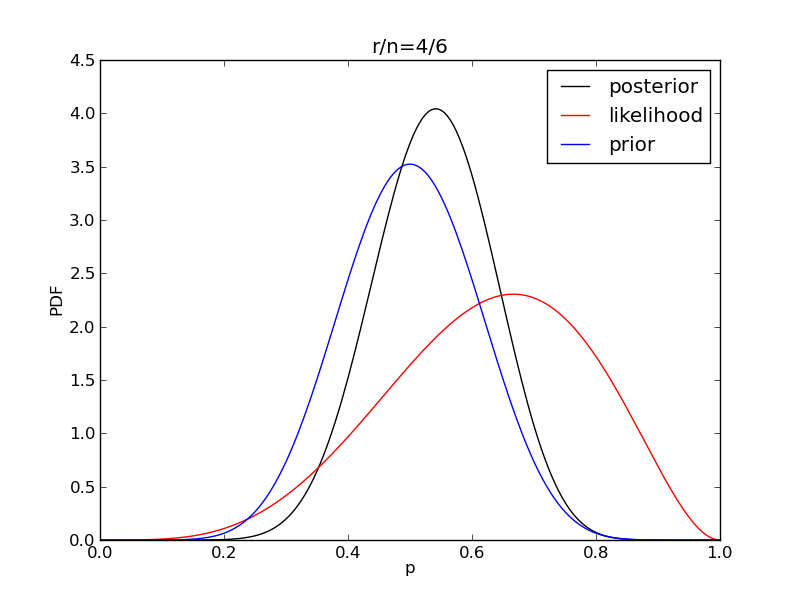
|
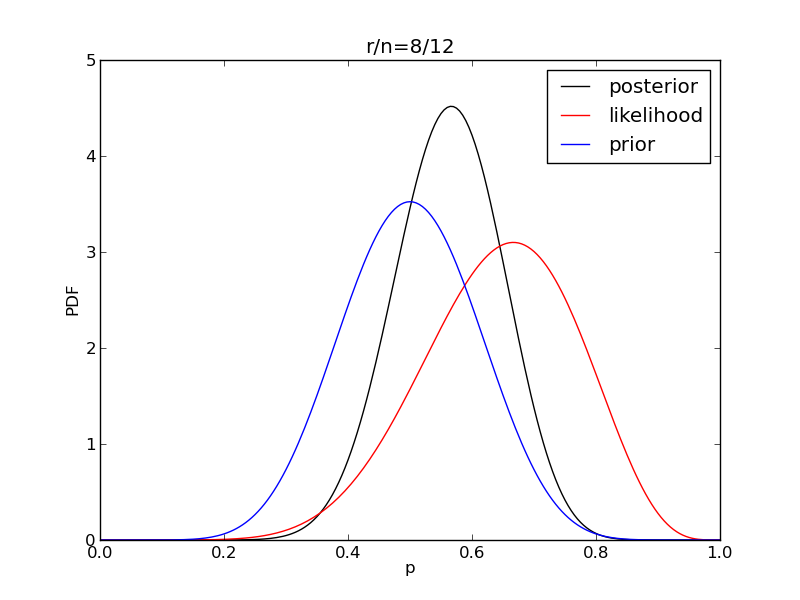
|
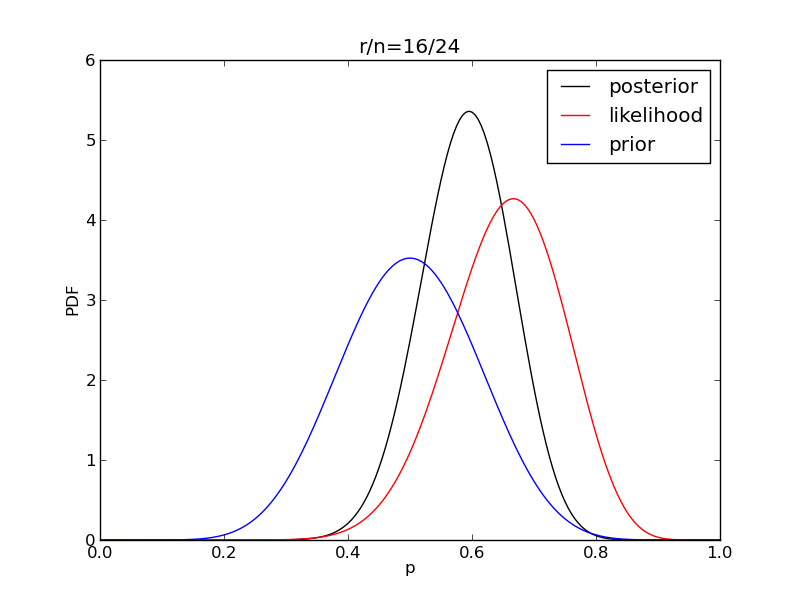
|
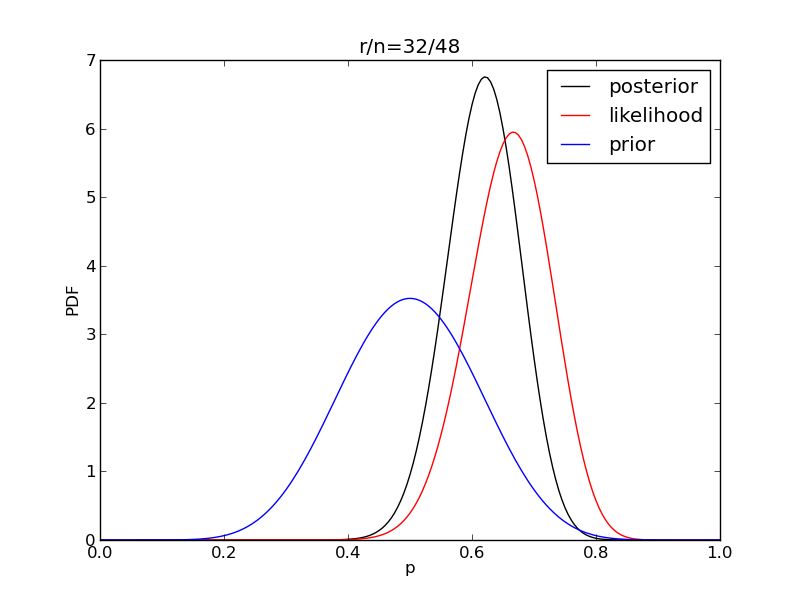
|
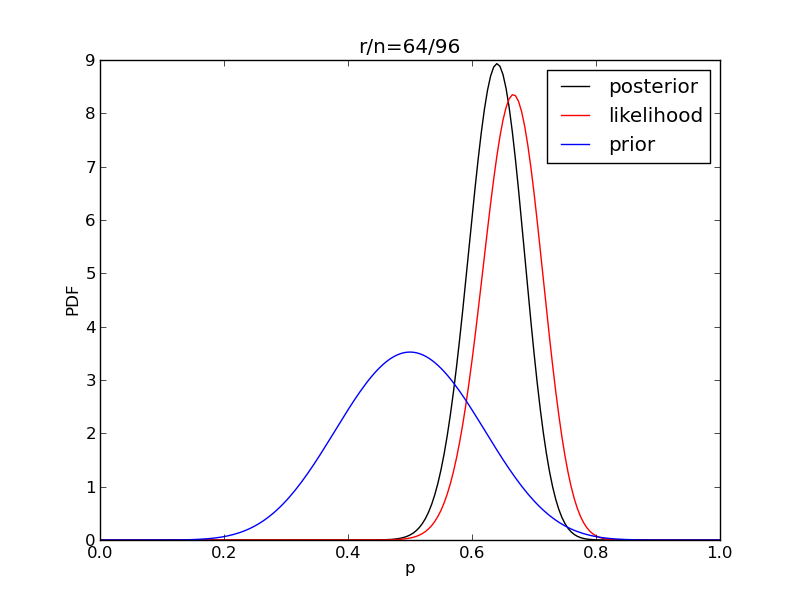
|
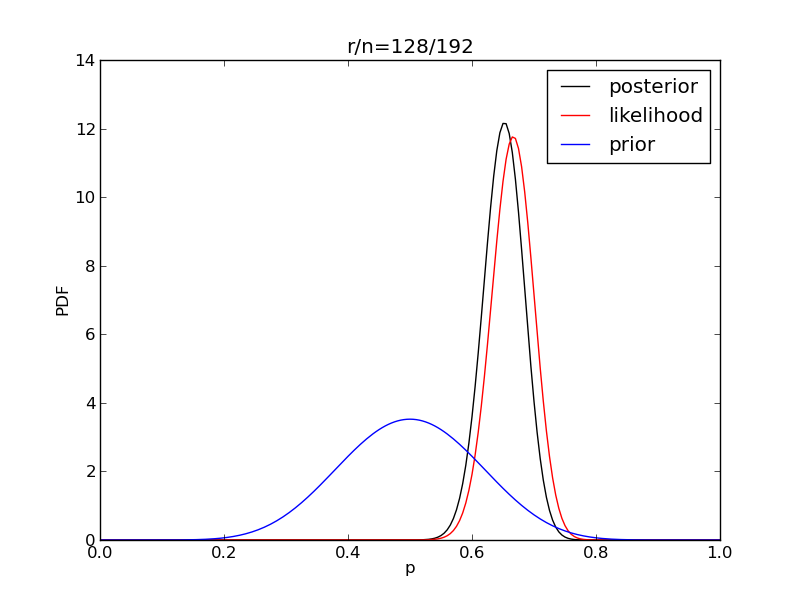
|
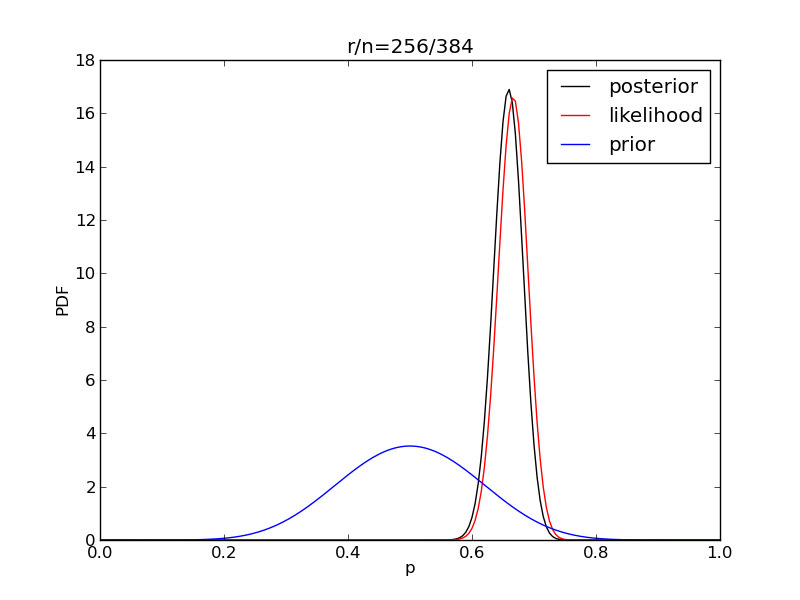
|
